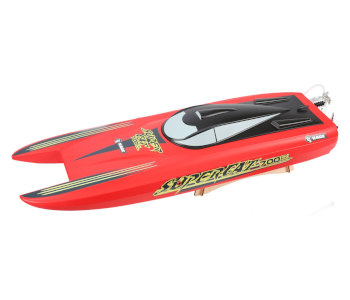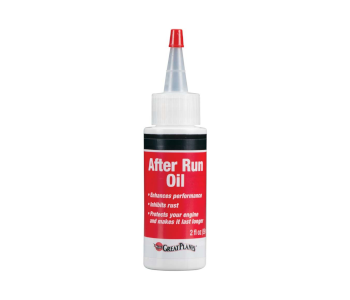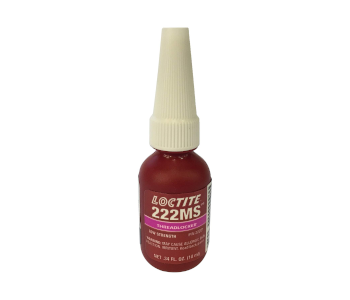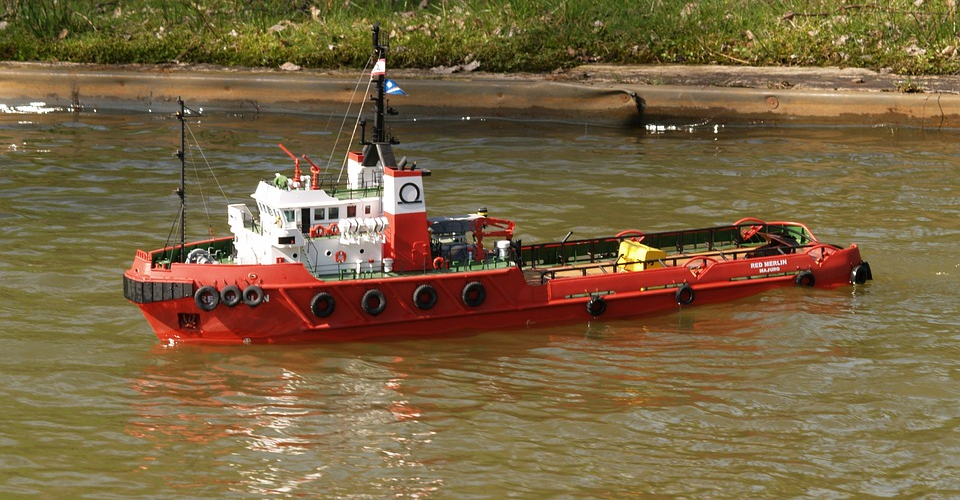10 Best Gas RC Boats – A Beginner’s Guide
Nitro and gas RC boats are starting to catch the imagination of serious RC boaters. They’ve been a long time coming, but if the trend continues, then it’s here to stay. The earlier gas-powered models used modified weed eater engines which sat well in RC hulls. Over time, fully converted engines began to emerge and the rest—as they say—is history.
Understanding Engine-Powered RC Boats
This straightforward beginner’s guide introduces gas boats and their engines. It looks at the typical topics talked about by fans of these mighty vessels. Knowing the basics is sure to help you make better sense of reviews, sales pages, and online discussions.
The 7 sections covered on this page include the following:
- A typical RC Gas-powered boat
- A typical RC Boat engine
- Fine-tuning gas boat engines
- Gas boat fuel
- RC gas boat maintenance
- RC boat’s and tuned piped
- Gas boat propellers
#1 A Typical RC Gas-Powered Boat

Smaller boats can run on gas engines, but the interest is with larger vessels. Most of these wave-making beasts are around the one-meter mark (approx. 40”) or more. But why gas and not nitro? The answer is simplicity. Nitro engines are more complicated, harder to start, and they need regular tuning. Most RC engine enthusiasts love to tinker, but within limits.
Big boats like these are not cheap. Still, fans of these models will tell you that we all spend a percentage of our income on wants. So, it makes sense to invest a little cash on something that brings so much pleasure. The beauty of RC is that it lasts, unlike a night on the town or throwaway fashion.
Gas boat disadvantages
Gas-powered RC boats cost more than the electric and nitro alternatives. That’s due to the larger size and heavier weight of these phenomenal crafts. Another disadvantage—for some—is that the models need routine maintenance to keep them in tip-top working condition. For many, though, tinkering with engines is part of the joy. They’re loud too, which is something you either like or you don’t.
Types of gas-powered boats for sale
The variety in gas RC boats is few and far between compared to electric models. More choices are becoming available as the demand for RC engine vessels grow. Current options include:
- RC gas-powered catamarans
- Hydroplanes
- Fiberglass speedboats
- RC speedboat kits
- Off-shore boats
- Deep-V racing boats
Some serious RC hobbyists like to scratch-build their gas-powered boats. That’s a surefire way to get the model you desire, but it’s not something a beginner would want to tackle. A softer alternative is to check out some of the nitro and gas boat kits. A typical kit includes parts and build instructions.
#2 A Typical RC Boat Engine
The gas engine is at the heart of any of these boats, and the thing that everything else centers around. They normally range from 2.0HP (smallest) to 5.0HP and above. Buying engines separate from the boat is not an overwhelming experience. That’s because there aren’t many to choose from. The crucial thing is to get something that matches your craft and meets your expectations.
RC boaters must break a new gas engine in before they can release its full potential. Manufacturers have different approaches to this, but it’s not a complicated process. Despite that, you must follow the exact procedures as set out in the user’s manual.
#3 Fine-Tuning Gas Boat Engines
Do you know what a healthy engine sounds, smells, and performs like? If not, then get someone to teach you or to do the tuning until you’re more familiar. A boat’s gas-powered engine must be running to fine-tune it. A few passes with a wide-open throttle is enough to warm it up sufficiently. A poorly tuned engine is going to either run lean or rich, but what’s the difference?
Running too RICH
The ideal fuel/air mix for an engine is called the stoichiometric fuel ratio. It’s total perfection but rarely achieved. Most engines tend to run a tad richer than the perfect ratio, and that’s okay. Even a fine-tuned engine runs richer when it’s cold, during acceleration, or when it’s under a heavy load.
A poorly tuned rich-running engine has too much fuel and too little air. A gas engine that runs too RICH will exhibit some of the following symptoms:
- A rich mixture smells gassy, a bit like rotten eggs
- Noticeable drop in fuel efficiency
- Poor performance, low power
- Rough engine idle
- Black, sooty spark plugs
- Black smoke spewing from the exhaust
There are several causes behind a rich running engine. It might be something as simple as a dirty air filter. It could also be faulty oxygen, mass airflow, or engine coolant temperature sensors. Other causes might be injectors that are stuck on open or a defective engine control unit (ECU). With newer engines, though, a little fine-tuning of a carburetor’s high or low-speed needles may suffice.
Running too LEAN
A lean-running gasoline engine has too much air and too little fuel. A gas engine that runs too LEAN may exhibit some or all the following symptoms:
- Underpowered
- Trouble starting, if at all
- Clean or white spark plugs
Common causes for a lean engine can be a dirty MAF sensor, spoiled oxygen sensor, and damaged or broken fuel injectors. Tuning the carburetor may be enough if there are no major underlying problems.
Carburetor tuning
You need to know something of the two carburetor needles to fine-tune your RC gas boat.
- High speed needle (HSN) controls fuel mixture
- Low speed needle (LSN) controls how much fuel enters the carb at idle or slow speed
Adjusting these needles lets you fine-tune the carb so that the engine doesn’t run too rich or too lean. The adjustments should always be in small increments. It takes some experience to know whether to lean or richen the mixture. It’s better to read or watch video tutorials before attempting to tune your carburetor. Better still, get someone with experience to show you person-to-person.
#4 RC Gas Boat Fuel
There’s nothing complicated about the fuel for RC boat engines. It’s the same stuff we put in our cars and therefore available at a gas station. The engines run on either 87-octane or 91-octane. It’s the addition of two-stroke oil to regular fuel that makes it a slightly different gasoline. The amount of oil must be exact for peak performance. Always refer to the user manual for optimal fuel mixtures.
#5 RC Gas Boat Maintenance

Maintenance should be a labor of love and not a necessary evil. Keeping your RC gas-powered boat in tip-top condition requires some routine upkeep. Pay particular attention to the hull as that helps to improve the longevity of the vessel. You also need to care for the engine, lubricants, and all fasteners.
Gas RC boats engine maintenance
Knowledge of your boat’s nitro or gas engine is vital. Follow the steps below if you don’t plan to run a nitro-powered engine for five or more consecutive days.
- Remove the glow plug
- Add a few drops of ‘after run oil’ into the space
- Rotate the engine (see next)
After-run oil works by coating the engine’s internal parts and thus keeps moisture out. You need to rotate the engine to ensure the oil reaches all the vital components. Two or three pulls should do it, or a couple of seconds if the starting mechanism is electric.
Don’t forget the shaft
Get into the habit of lubricating the boat’s shaft, especially with high-powered hulls. It’s a simple process that you mustn’t neglect. Here’s how you go about it:
- Loosen the flex coupler (engine end)
- Carefully remove the assembly
- Lubricate the flex and prop shaft with marine grease
- Restore the assembly
Always, always, always, check your fasteners

Vibrations, bangs, and accidents can all loosen the boat’s fasteners over time. Failure to check these is asking for trouble. It should be routine maintenance after every single run.
It’s not unusual to come across a screw or two that gets loose after every run. If you have any like that—and the screws don’t need frequent removal—secure them with a permanent thread locker. Or, you can use a low strength thread locker with screws that need routine removal. You can also weaken permeant thread locker if you need to with localized heat.
#6 RC Boats and Tuned Pipes
The tuned pipe is a super-charger for the engine. The tune of a pipe varies between boats, props, and setups. It’s possible to adjust or modify them to achieve optimal performance. Pipes work like this:
- Helps to evacuate (pull) exhaust gases from the engine
- Pushes unused fuel and air mixtures back to the combustion chamber
The way to maximize performance is simple in theory. You tune the pipe so that its push and pull harmonizes with the stroke. That’s done by adjusting the header length in fixed expansion chambers.
#7 Gas Boat Propellers
Propellers are what provide the RC gas-powered boat with its forward thrust. Radio control boaters often like to experiment with different types of props. Knowledge and experience help to narrow down choices, but testing blades in the water is the only way to know for sure.
Here’s a breakdown on 2-blade vs. 3-blade props assuming equal diameter and pitch.
| 2 BLADE PROPELLER ADVANTAGES | 3 BLADE PROPELLER ADVANTAGES |
|---|---|
| 5 Higher top speed Less load on the boat’s engine Engine turns higher RPM | Higher thrust and faster acceleration Better stability especially cornering Higher lift characteristics |
The Conclusion
You don’t need to own a nitro or gas-powered boat to start your journey. Join an online forum and partake in conversations, ask questions, and read the threads. There are also plenty of RC clubs to join once you get your radio control engine-powered boat.
OK, that concludes this short guide on boats with gas engines. You should know more now than when you started to read this page. Driving gas RC boats is always exciting and never dull. There’s an entire community surrounding scale RC boating that’s friendly helpful, and growing fast.

